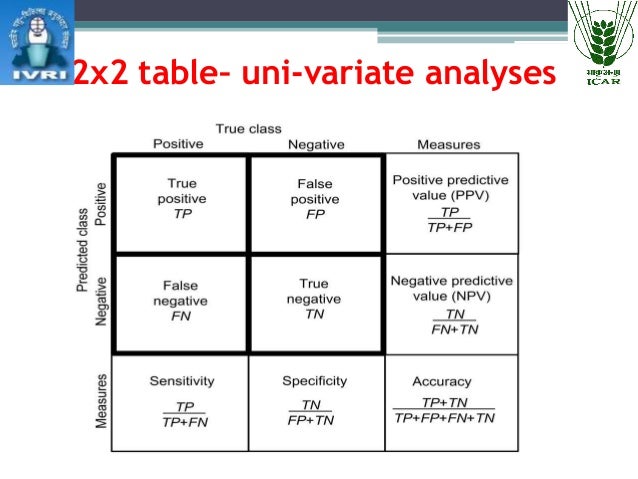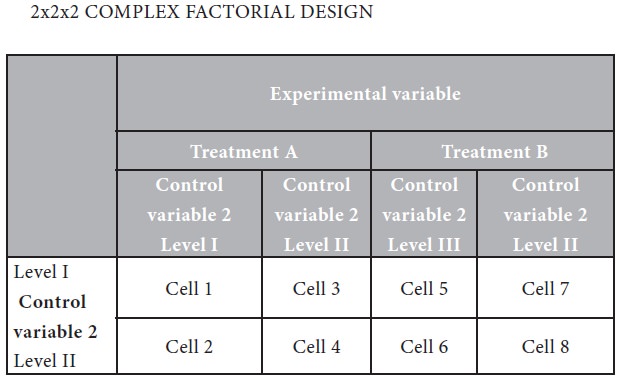Table Of Content

Even if you are primarily interested in the relationship between an independent variable and one primary dependent variable, there are usually several more questions that you can answer easily by including multiple dependent variables. The challenges that may arise in interpreting interactions support strategies to select ICs based chiefly on main effects (Collins et al., 2009; Wu & Hamada, 2011), which is the approach taken in engineering and other fields that use screening experiments (Wu & Hamada, 2011). For instance, relative to some complex interactions, main effects are more easily interpreted (Collins et al., 2014); a factor’s main effects are interpretable even when it interacts with other factors. When effect coding is used, each effect is orthogonal to every other effect in the analysis model (orthogonal when the n’s are equal in each experimental condition, and nearly orthogonal when the n’s differ by a modest amount). Thus, a significant main effect reflects an experimental effect that occurs on average across all other factors in the model even when the relevant factor is involved in significant interactions (Chakraborty et al., 2009). Higher order interactions can reflect complex patterns that defy easy interpretation.
Statistical modeling and optimization of heterogeneous Fenton-like removal of organic pollutant using fibrous catalysts ... - Nature.com
Statistical modeling and optimization of heterogeneous Fenton-like removal of organic pollutant using fibrous catalysts ....
Posted: Wed, 30 Sep 2020 07:00:00 GMT [source]
Factorial Designs¶
The basic concept of experimental study design is to study the effect of an intervention. In this study design, the risk factor/exposure of interest/treatment is controlled by the investigator. Therefore, these are hypothesis testing studies and can provide the most convincing demonstration of evidence for causality. As a result, the design of the study requires meticulous planning and resources to provide an accurate result. Shows how each level of one independent variable is combined with each level of the others to produce all possible combinations in a factorial design. Again, because neither independent variable in this example was manipulated, it is a non-experimental study rather than an experiment.
What Is a Factorial Design? Definition and Examples
Also, regardless of the design, the actual assignment of participants to conditions is typically done randomly. In a between-subjects factorial design, all of the independent variables are manipulated between subjects. For example, all participants could be tested either while using a cell phone or while not using a cell phone and either during the day or during the night. This would mean that each participant would be tested in one and only one condition. In a within-subjects factorial design, all of the independent variables are manipulated within subjects.
Examples of Factorial Designs
However, since this design depends on already collected data from different sources, the information obtained may not be accurate, reliable, lack uniformity and/or completeness as well. Though historically controlled studies maybe easier to conduct, the disadvantages will need to be taken into account while designing a study. Clinical trials are also known as therapeutic trials, which involve subjects with disease and are placed in different treatment groups.
Whether to Use an RCT or a Factorial Design
From this point of view, a 2 × 2 factorial trial can be seen as two trials addressing different questions on the same study population. It is important that both parts of the trial are reported as if they were just a two-arm parallel group trial. For this reason, the treatments selected for investigation in a factorial trial should have no known clinical interactions and, perhaps, different mechanisms of action. Consistently, it has been suggested that properly conducted factorial trials may be the best available way to investigate whether an interaction exists between treatments (McAlister et al.2003).
Placebo
It should be quite clear that factorial design can be easily integrated into a chemical engineering application. Many chemical engineers face problems at their jobs when dealing with how to determine the effects of various factors on their outputs. For example, suppose that you have a reactor and want to study the effect of temperature, concentration and pressure on multiple outputs. In order to minimize the number of experiments that you would have to perform, you can utilize factorial design.

Assigning Participants to Conditions
To briefly add to the confusion, or perhaps to illustrate why these two concepts can be confusing, we will look at the eight possible outcomes that could occur in a 2x2 factorial experiment. The study by Brown and her colleagues was inspired by the idea that people with hypochondriasis are especially attentive to any negative health-related information. This led to the hypothesis that people high in hypochondriasis would recall negative health-related words more accurately than people low in hypochondriasis but recall non-health-related words about the same as people low in hypochondriasis. This combination of studies is similar in some respects to a factorial experiment but lacks certain unique advantages of factorial studies. The purpose of this commentary is to elaborate on those potential advantages of factorial studies, referring back to the article by Kaplan et al1 for context.
The above table contains all the conditions required for a full factorial DOE. Minitab displays the standard order and randomized run order in columns C1 and C2, respectively. The first run (as specified by the random run order) should be performed at the low levels of A and C and the high levels of B and D. In the main "Create Factorial Design" menu, click "OK" once all specifications are complete. The following table is obtained for a 2-level, 4 factor, full factorial design. None of the levels were specified as they appear as -1 and 1 for low and high levels, respectively.
The research designs we have considered so far have been simple—focusing on a question about one variable or about a statistical relationship between two variables. But in many ways, the complex design of this experiment undertaken by Schnall and her colleagues is more typical of research in psychology. Fortunately, we have already covered the basic elements of such designs in previous chapters. In this chapter, we look closely at how and why researchers combine these basic elements into more complex designs. We start with complex experiments—considering first the inclusion of multiple dependent variables and then the inclusion of multiple independent variables. It is important to note that interpretation of complex higher order interactions may not be aided by simple effects testing.
This is an interesting point of increasing importance in an era of multiple treatments. To assess the presence of interaction, McAlister et al. suggested the use of ‘interaction ratio’ – a comparison of the effect of each treatment in the presence or absence of the other treatment. The interaction ratio is 1 in the presence of no interaction, above 1 in the presence of synergy and below 1 when there is antagonism. Chakraborty et al., (Chakraborty et al., 2009) noted that factorial designs may not perform optimally for intervention selection in cases where there are weak main effects, but relatively strong interaction effects. Unfortunately, this situation may be a fairly common occurrence in factorial experiments of clinical interventions (e.g., Cook et al., 2016; Piper et al., 2016; Schlam et al., 2016).
Traditionally, experiments are designed to determine the effect of ONE variable upon ONE response. Fisher showed that there are advantages by combining the study of multiple variables in the same factorial experiment. Factorial design can reduce the number of experiments one has to perform by studying multiple factors simultaneously. Additionally, it can be used to find both main effects (from each independent factor) and interaction effects (when both factors must be used to explain the outcome).
Research like this, by the way, has shown both income and health make extremely small contributions to happiness except in the case of severe poverty or illness [Die00]. There are many simple examples of two independent variables being dependent on one another to produce an outcome. The dependent variable (outcome that is measured) could be how far the car can drive in 1 minute. The simplest way to understand a main effect is to pretend that the other independent variables do not exist. If you do this, then you simply have a single-factor design, and you are asking whether that single factor caused change in the measurement. For a 2x2 experiment, you do this twice, once for each independent variable.
Remember, an interaction occurs when the effect of one independent variable depends on the level of the other independent variable. We can look at this two ways, and either way shows the presence of the very same interaction. First, does the effect of being tired depend on the levels of the time since last meal? We see the red bar (tired) is 1 unit lower than the green bar (not tired). We see the red bar (tired) is 3 units lower than the green bar (not tired). So, there is an effect of 3 units for being tired in the 5 hour condition.

This Section of Epidemiology and Psychiatric Sciences regularly appears in each issue of the Journal to cover methodological aspects related to the design, conduct, reporting and interpretation of clinical and epidemiological studies. Belong to the A × B interaction; interaction is absent (additivity is present) if these expressions equal 0.[13][14] Additivity may be viewed as a kind of parallelism between factors, as illustrated in the Analysis section below. Other terms for "treatment combinations" are often used, such as runs (of an experiment), points (viewing the combinations as vertices of a graph, and cells (arising as intersections of rows and columns). After the number of factors is chosen, click on the "Designs..." option to see the following menu. For example, the very same pattern of data can be displayed in a bar graph, line graph, or table of means.
But there are also plausible third variables that could explain this relationship. It could be, for example, that people who are lower in SES tend to be more religious and that it is their greater religiosity that causes them to be more generous. Or it could be that people who are lower in SES tend to come from certain ethnic groups that emphasize generosity more than other ethnic groups. The researchers dealt with these potential third variables, however, by measuring them and including them in their statistical analyses.
An analysis of environment effect on ethanol blends with plastic fuel and blend optimization using a full factorial design ... - Nature.com
An analysis of environment effect on ethanol blends with plastic fuel and blend optimization using a full factorial design ....
Posted: Thu, 15 Dec 2022 08:00:00 GMT [source]
But including multiple independent variables also allows the researcher to answer questions about whether the effect of one independent variable depends on the level of another. Schnall and her colleagues, for example, observed an interaction between disgust and private body consciousness because the effect of disgust depended on whether participants were high or low in private body consciousness. As we will see, interactions are often among the most interesting results in psychological research. In sum, unless the investigator has access to clearly relevant data (preferably from factorial experiments) s/he should have strong concerns about how the elements in a treatment (the ICs) might interact. Only factorial designs permit efficient screening of multiple ICs or dimensions (e.g., length of treatment), revealing their main effects and interactions and permitting the identification of those that are compatible or most promising (Collins et al., 2016). However, factorial experiments do not permit strong inferences about how well a particular grouping of components (occurring as levels of different factors) will work as an integrated treatment as compared to a control.

No comments:
Post a Comment